St Brigid’s Well, Greencastle, County Donegal
This one was a surprise. My son and I were driving north along the coast road of the northernmost peninsula of the Irish republic this summer, looking for somewhere to camp in our van. The Inishowen peninsula was bathed in sun, and peaceful. I don’t think it gets too many tourists at the best of times. To the east, across the waters of Lough Foyle, we could see the UK, in the shape of Northern Ireland. The border between the two countries runs somewhere through this stretch of sea:
My son, indeed all of my family, are used to me dragging them across fields to find wells, and indeed any other old ruin that catches my eye. They’ve become very stoical about it. But this time around I was not well-hunting. I was on holiday. Still, for the obsessive, there can never be any rest.
Sure enough, something by the side of the road caught my eye as we sped past:
A well! I said, flooring the brake pedal. My son, resigned already to his fate, asked if we had to go and look at it. Only for a minute, I said. Promise.
Sometimes, life springs you a surprise. There was no well marked on the map. When I got home and looked it up online and in what well-related literature I have, there was barely any mention of it. No history in the old schoolbooks that I could find. No stories anywhere. If any readers know any, do tell us below.
All we found was this lovely little inlet off the road, hedged in on both sides with green:
Over the well itself is a sign, which tells you all about St Brigid. Connoisseurs of this series may remember another sign over a well to Brigid which was rather, as we have all been trained to say these days, problematic. This time around though, the signmakers were paying attention. There’s not a pagan goddess in sight:
The water was still and didn’t look especially drinkable, but there was plenty of it:
Above and behind the well, as you can see in the first photo, is what looks like a very worn, and thus probably very old, stone cross. There is a great mound of earth behind the well, and the cross pokes out of the top of it. It looks to me as if the lower part of the cross may be buried in the mound. An amateur archaeologist is required.
There were a simple few offerings: some coins scattered about, and a rosary tied around the neck of the cross. But there was something else too. At the foot of the cross lay a small stone. On it, painted in blue and white, were the words:
FIONA DONOHOE WILL GET JUSTICE FOR NOAH.
Sometimes you see something that sticks with you, though you may not quite know why. There was something desperate about this stone. If ever there were an example of an old holy well still being a living site for veneration, prayer and supplication, here it was. Who was Fiona, and who was Noah? Why had she come here? To ask St Brigid for help? To ask God? It seemed likely. After my holiday was over, back home and online, I typed the slogan into a search engine, slightly nervous about what I might find, wondering if I would find anything.
What I found was that Fiona’s quest for justice for Noah was well-known in Northern Ireland. The poor woman’s fourteen year old son had gone missing one day in 2020, and then turned up a week later, dead and naked in a storm drain in Belfast. Nobody seems to know why, or what happened to him, or they’re not telling if they do. The police, if they know anything, haven’t revealed it, which is causing a lot of disquiet. There are all sorts of twists and turns to this story that seem to suggest some fouler-than-usual play. This is Northern Ireland. It happens, still. An inquest is opening soon.
I thought about my own son, then, who is about the same age as Noah. It’s hard to even think about this stuff. It would do no harm for us to say a prayer for the boy, and his grieving mother. I think St Brigid is probably doing the same now.
These wells I like to tour around with my camera and notebook: sometimes they can seem like relics from some forgotten past. Interesting bits of archaeology or history. But they’re not that; not in cases like these. They remain living religious sites. They are still here to offer comfort, solace, or even just peace when little else can, to those who need it most. There will always be a need in this broken world.





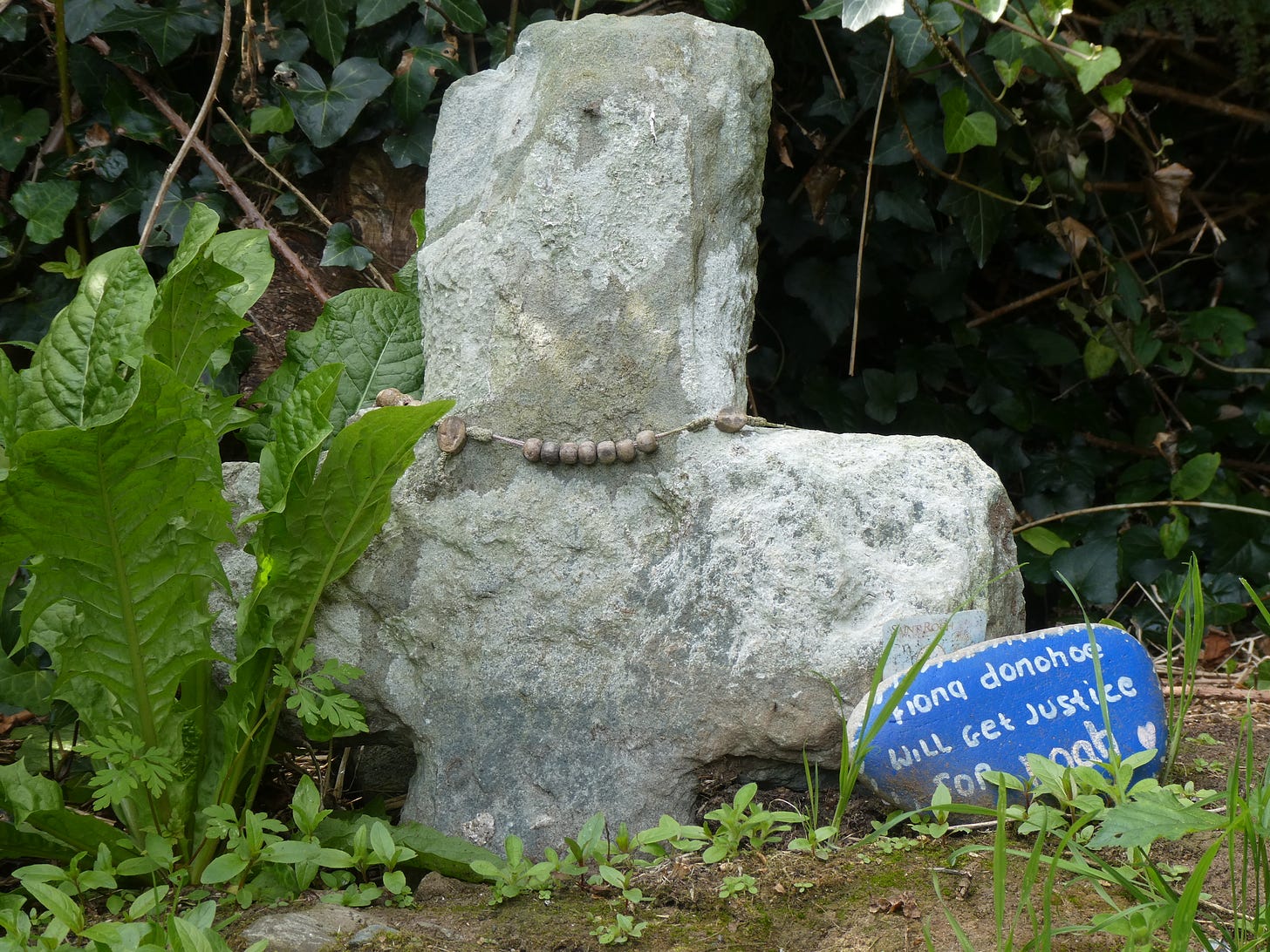
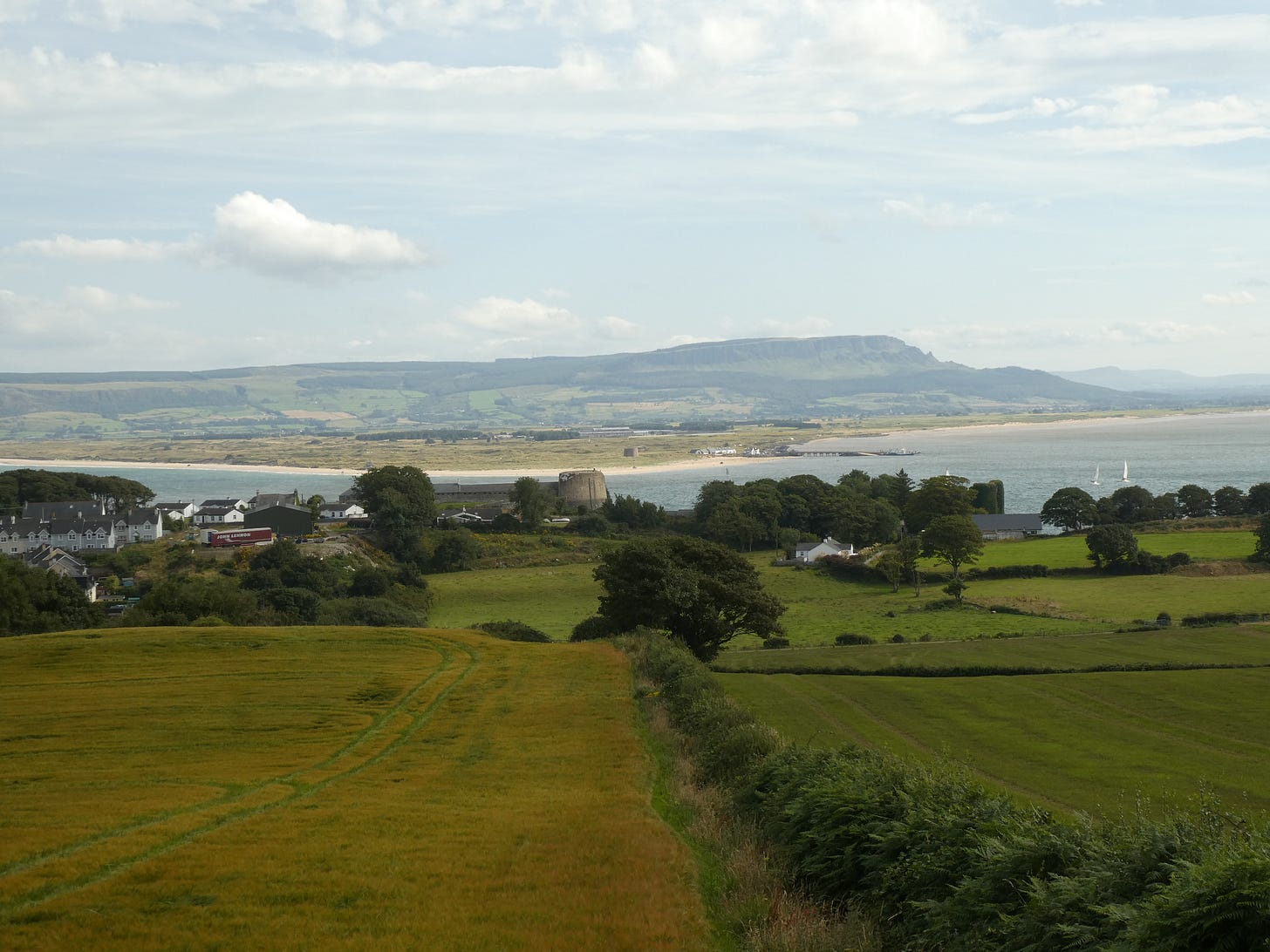
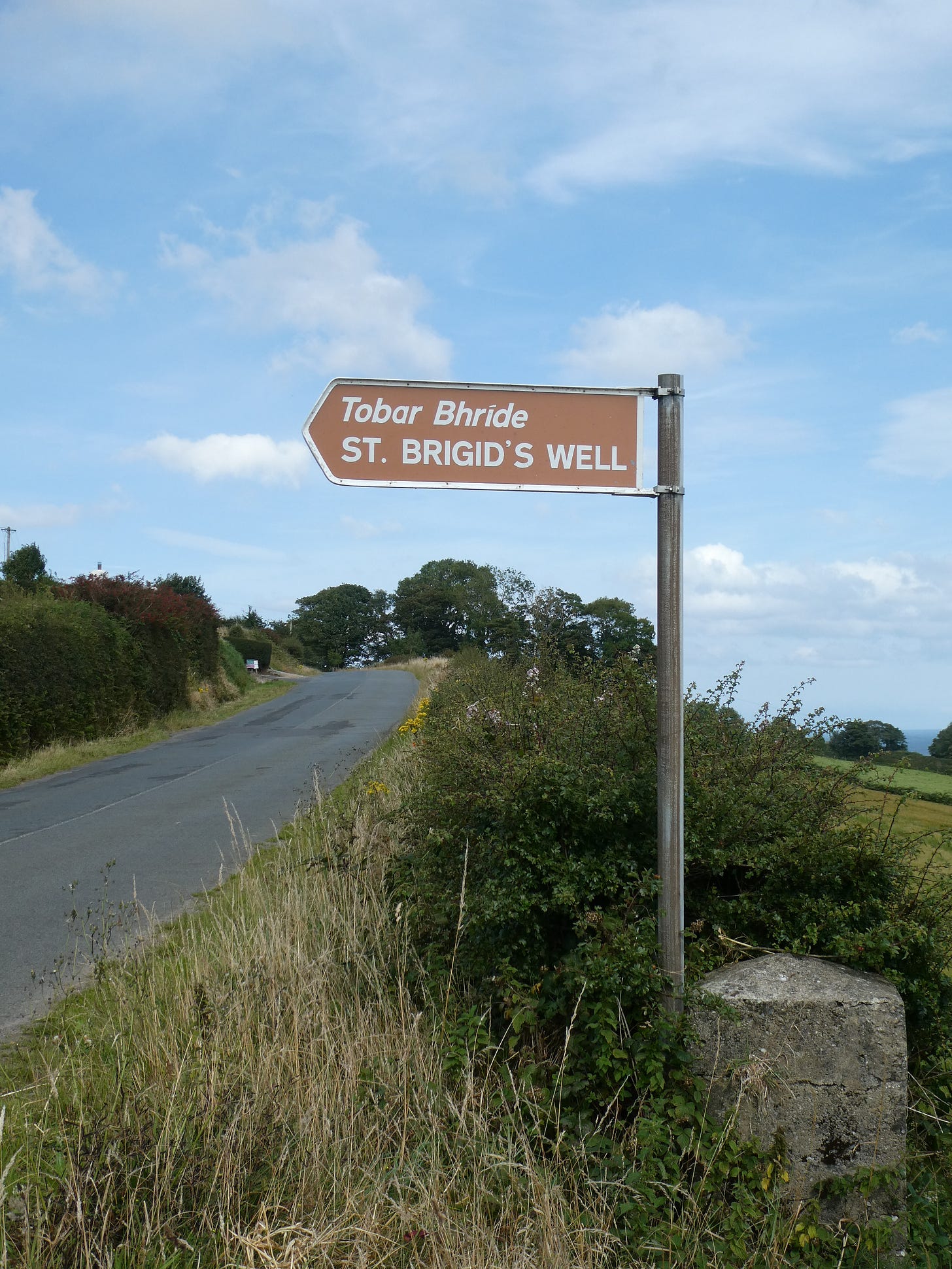
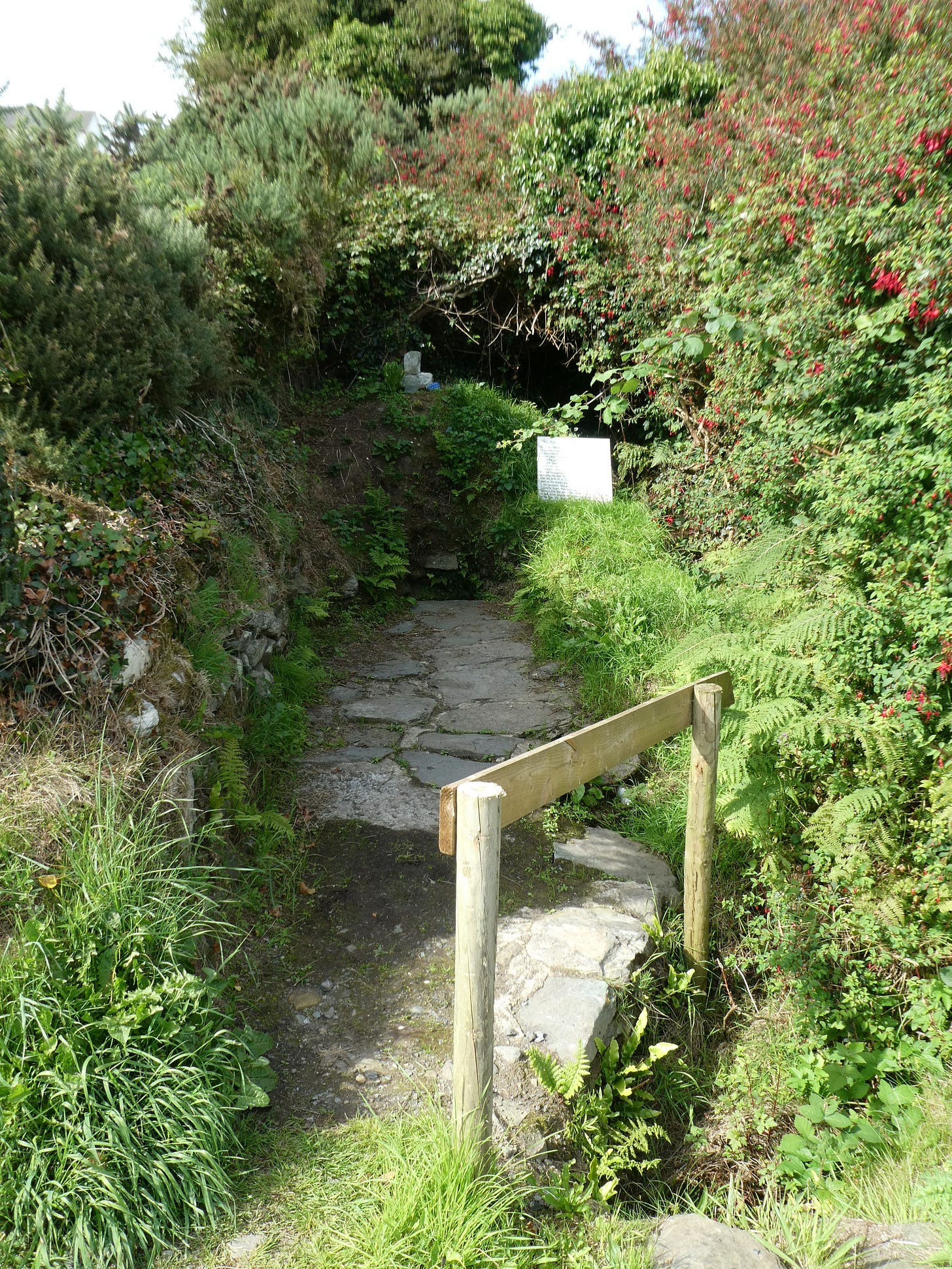
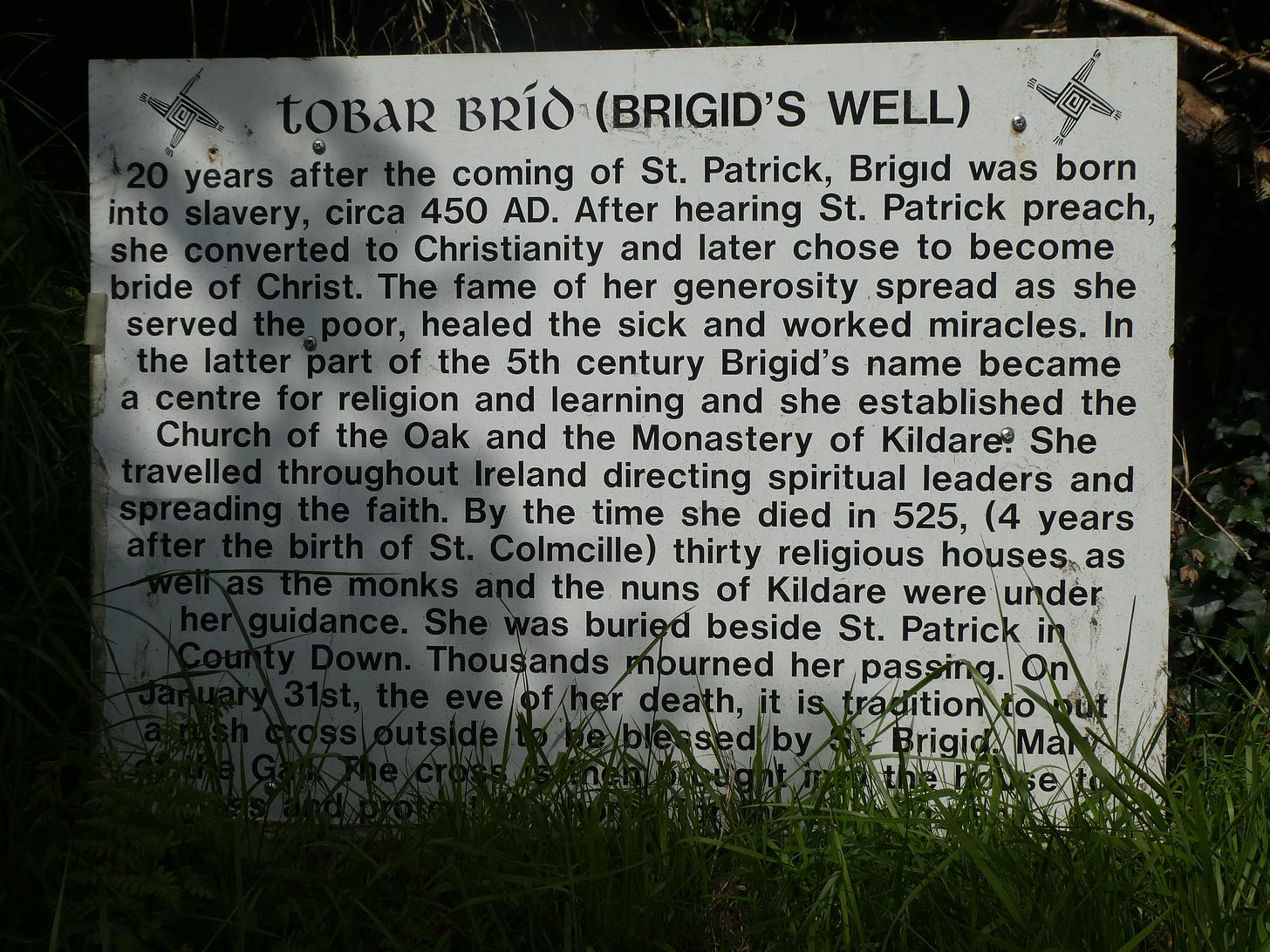
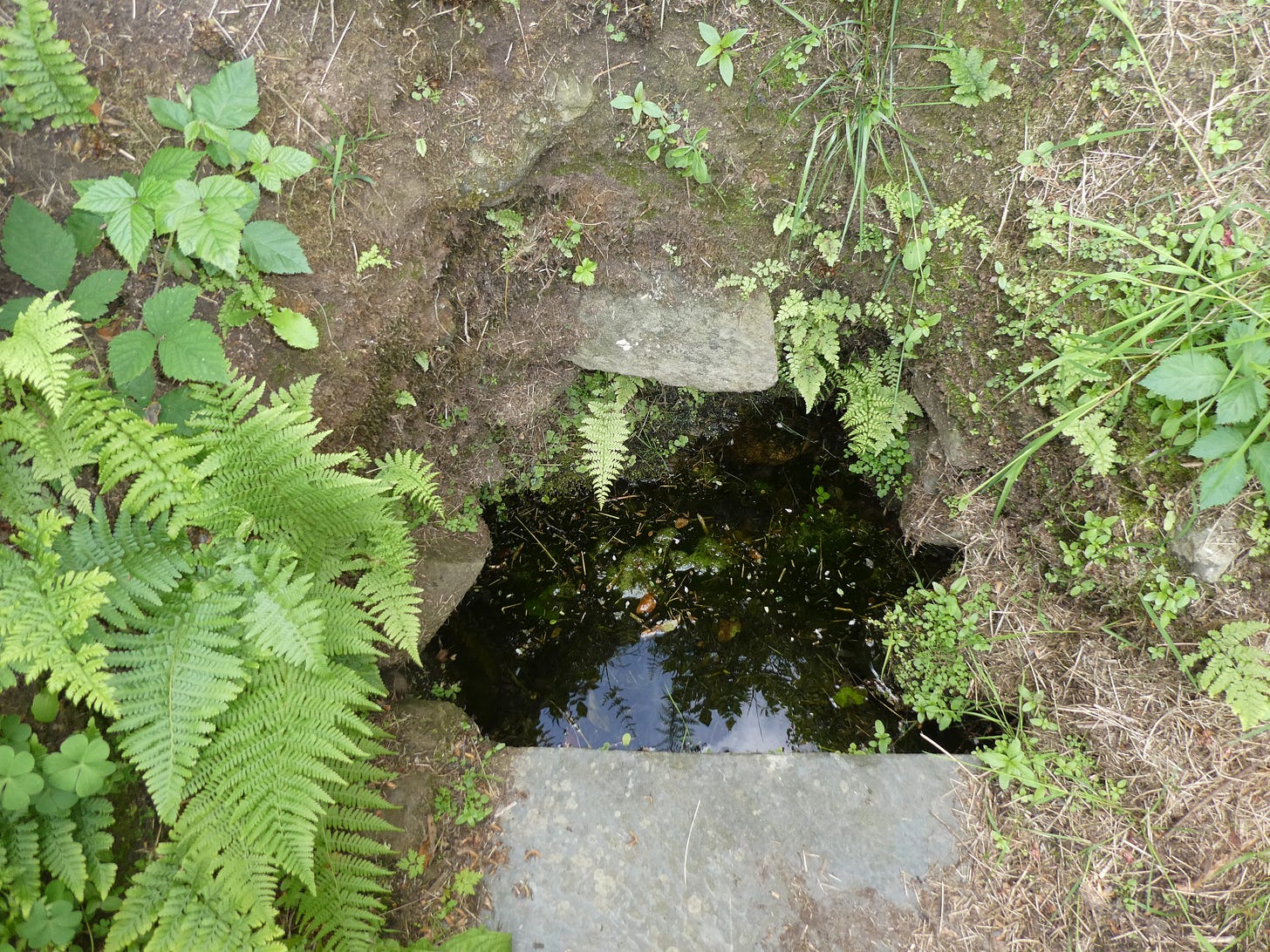

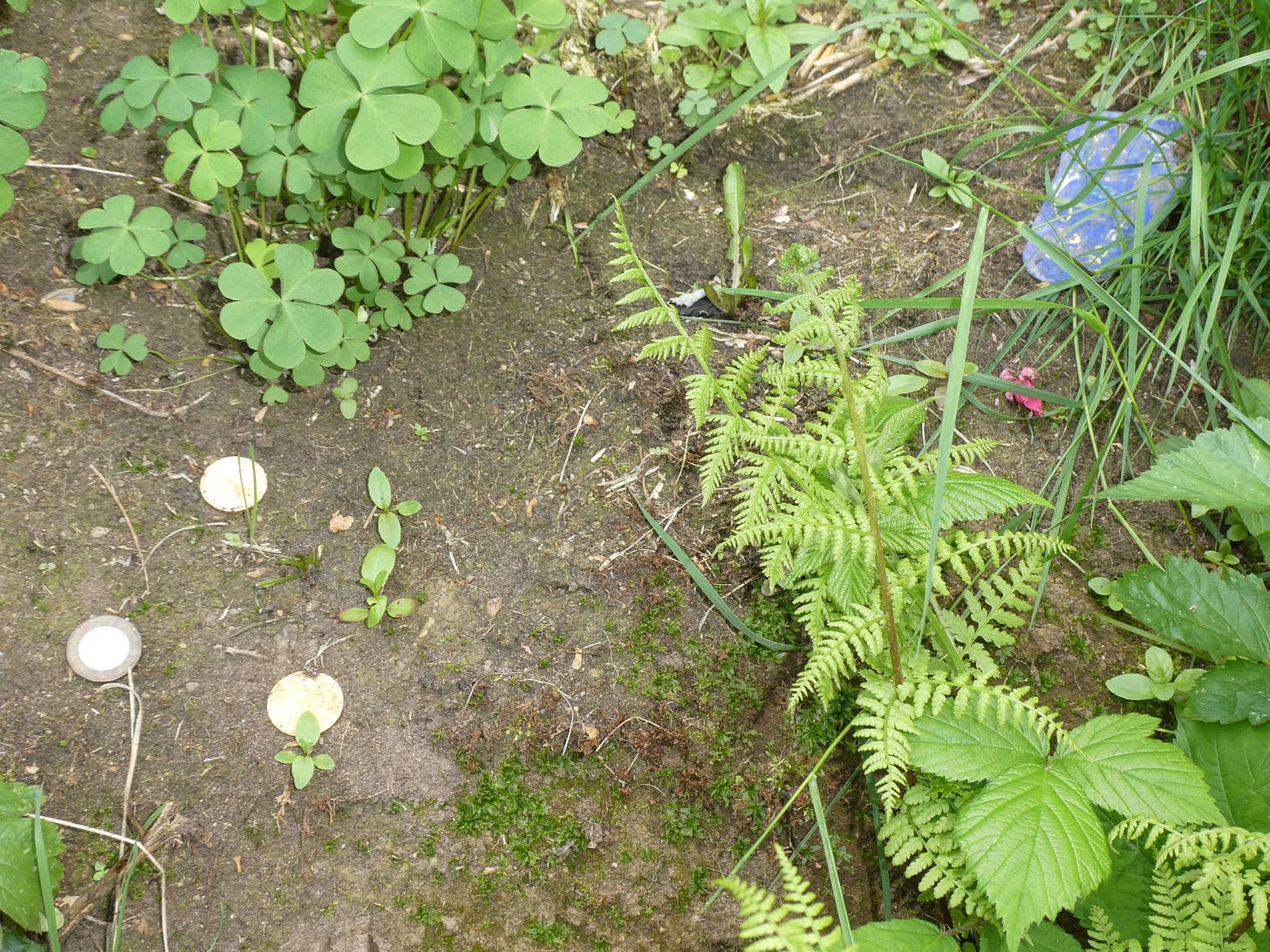
A beautiful well, this morning. Everything about it, maybe particularly the fact that it seems to have escaped the effects of so much contemporary rewriting. I wish that I could escape the effects of this contemporary rewriting too. They rub and grate on me.
Thoughts on Fiona and her son : last night I listened to Samuel Barber's Hermit Song, "The Crucifixion" (the whole song cycle is one of my very favorite pieces of music), and in "The Crucifixion", the narrator says how much Jesus was grieved at the suffering he was causing his mother standing at the foot of his cross.
That says a lot to me about the way man and woman are inextricably tied in their fate, from the beginning to the end, and regularly I meditate on all the suffering (and joy) that results from this.
You are lucky that your son and family are patient with you, Paul, because they love you so much. You must be doing something right, there...
As a mother of 2 boys, it makes me feel sick to think what Noah and Fiona have gone through and are continuing to go through.
I’m put in mind of Ephesians 6: For we wrestle not against flesh and blood but against principalities, against powers, against the rulers of the darkness of this world , against spiritual wickedness in high places.
I always think of wells ad ‘thin places’ and I pray with all my heart that Fiona’s pleas and prayers are answered by our all loving and most compassionate God.